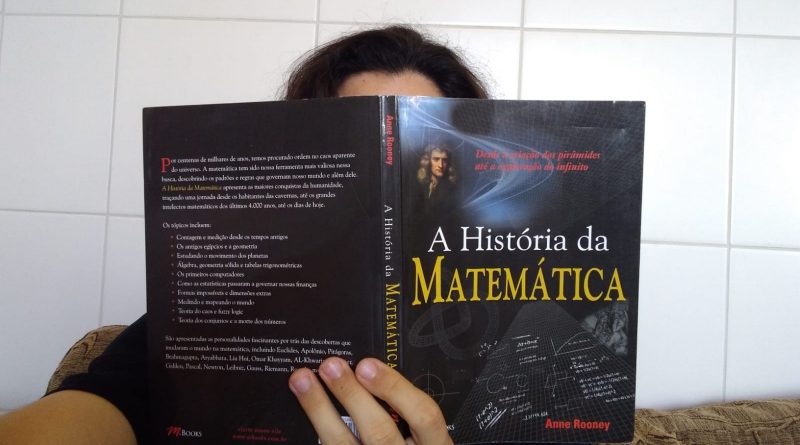At Zero we read “A História da Matemática” by Anne Rooney
Recalling my graduation in Mathematics at USP, I realize how things are presented to us in a direct and final way. We usually start with the disciplines of Calculus and Analytical Geometry, but at no time are we guided on where Calculus or Analytical Geometry came from.
You might be thinking, “ahw, but knowing how it came about isn’t really that important…” or that it’s more a matter of curiosity, so it wouldn’t be worth “wasting” precious course time on such aspects. I really think for a while I thought so myself. It is quite a natural thought when you live in that environment where we are suffocated and pushed to the limit of exhaustion to reach 5.0 in tests. Faced with a study strategy aimed at getting a hard-earned 5 points, understanding the history and context of those concepts seems to have little or no influence. Like, knowing the story behind Integration might seem irrelevant to the ability to use Integration in an exercise.
But today, thinking more calmly, I see that these are not issues that should be overlooked. Because the order in which mathematics was developed and the way in which different areas were mixed, generates a sense and cohesion in the contents. It is clear that over the years living among mathematicians, we ended up learning a little history of mathematics, but as isolated facts and difficult to associate. So really, understanding that the problem of calculating areas came before calculating growth rates makes us think about how much area is a more intuitive notion despite Integration being a more complex process than differentiation. Small notions, however little they seem to influence our practical activity, are positive for us to situate ourselves in what we are doing. For example, when we calculate the area under a curve, it doesn’t make sense to arrive at a negative value… but if we just go through the calculations we can find that this negative value makes as much sense as the positive.
I loved reading the book “A História da Matemática” by Anne Rooney. It is not an academic book to be used as a base reference for research, but the author does an excellent job presenting not only the facts, but also stitching together its evolution over different periods of history. Making it clear, for example, that integrating appeared before deriving, and that the relationship between them is something relatively recent and that it does justice to the pompous name it received (Fundamental Theorem of Calculus) as it unites these two fields that grew half separated by centuries . Reading this book it is very clear that progress in mathematics did not occur in an isolated or peaceful way, people died for proposing different ideas (such as the disciple of Pythagoras who showed the existence of irrational numbers) and that “obvious” ideas were not always had as obvious (such as the decimal system was largely avoided, although it greatly simplify the calculations). That the concepts were not always as well accepted as they are today, and that people in different parts of the world who never met were working in the same directions (and sometimes at the same time).
It is also quite clear that the subjects did not appear in the order presented to us at graduation. But it’s also clear why it’s not interesting to present them as they arose in history. It is also clear that disciplines such as Calculus and Analytical Geometry are not there at the beginning of graduation for convenience, but because they are pillars behind very old and very applied mathematical issues, in addition to being directly related (although this perception is not so clear when we first stepped into university and received a ton of exercise lists to do).
This is a reading that I certainly recommend to anyone who wants to study mathematics or rethink the way we teach mathematics, even for those who are not going to attend an undergraduate degree or continue in the field of mathematics, this is a text that provides an understanding of how knowledge mathematician probably emerged and developed. Highlighting the historical evidence, its cultural, religious aspects and the main drivers that provided its progress. This makes it clear that mathematics per se is something quite new, and that before that it was a “science” that was widely applied to the most diverse demands of each society. So much so that the emergence of mathematics without a real application or without an imaginable context was a shock, working it with a purely conceptual universe that is now well accepted by great mathematicians a few centuries ago was considered outrageous and absurd.
I feel that with this reading, the isolated facts of the History of Mathematics that I knew were tied together, filling in the existing gaps and even making me go back to the undergraduate period, when some professor tried to bring a little historical perspective to the problem discussed. The intention is good, but the pace and pressure in which the students lived did not favor this type of deepening that could have provided a better and more meaningful learning among the apparently isolated concepts that were discussed.
I thank Editora M.Books for the courtesy book “A História da Matemática” by Anne Rooney, which enabled the production of this text.

